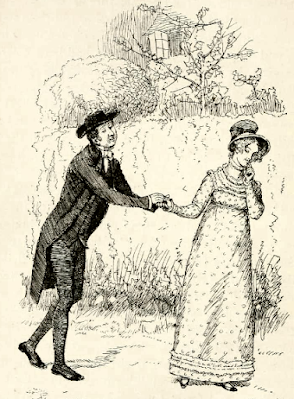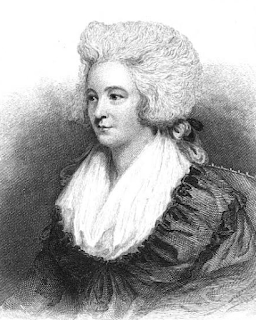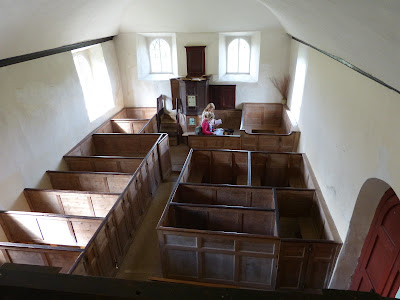You won’t travel very far in England without encountering a parish church building. Likewise, you won’t read much Jane Austen before running into a reference to the church.
The Church of England was deeply embedded in the landscape that Austen lived in and wrote about. But just as many of England’s church buildings are now considered relics, the references to church in her writing are seen as throwbacks to another time. The world she inhabited is no more.
What many Austen fans don’t realise is that there are subtleties and humour that escape the modern reader. While we can still laugh at the absurd Mr Collins in Pride and Prejudice, or Mr Elton in Emma, we can’t appreciate the depth of the humour or the pathos as Austen intended.
However, we can now get closer to it with the help of Brenda Cox’s excellent new book, Fashionable Goodness: Christianity in Jane Austen’s England. Motivated by her own Christianity and love of Austen’s works, Brenda sought to better understand faith and church in Regency England.
 |
| Mr Collins and Charlotte Lucas by Hugh Thomson in Pride and Prejudice by Jane Austen 1896 edition |
Brenda wanted to write her own version of an Austen story, but soon realised that to do so meant knowing more about how the church operated in England at that time. Unable to find a book that told her everything she wanted to know, she decided to write one herself.
It was a labour of love that took nearly ten years. The result is an in-depth study not only into the church, but also into Austen’s own experience of faith and religious institutions. It describes how this coloured her writing. This analysis is both broad and deep. It includes discussion of how the clergy were organised, how people worshipped, the different types of church buildings and the typical work of a clergyman.
The book also discusses faith in the community, attitudes to elopement, adultery and divorce, along with the relationship between faith and science.
However, Brenda doesn’t stop there—that’s just part one. In part two she discusses the challenges facing the Church of England during Jane Austen’s time. Part three looks at outreach and the legacy of church.
Chapters cover the Methodist movement, parishioners of colour, Nonconformists and dissenters, and the abolitionist movement. Brenda profiles a number of high-profile Christians such as John Newton (author of Amazing Grace), William Wilberforce, and Hannah More.
It’s easy to forget that the church in Jane Austen’s day had deep medieval roots. This was reflected in complicated, arcane structures that defied easy explanation. These fed into the language of the church, which used terms like beneficed clergyman, living, advowson, glebe land and prebend stall. Brenda’s book explains all of these, and much more.
 |
| Hannah More from Memoirs of the life and correspondence of Mrs Hannah More by William Roberts (1835) |
All this material is backed by glossaries and comprehensive notes. There are nearly 100 pages of reference material.
I was given a digital pre-publication copy of the book, so I can’t judge its size and weight. However, the number of pages imply that it’s sizeable.
Brenda states that she started looking into faith and church in the time of Jane Austen as research for a novel. But she learned so much that she wanted to share it with others who, like her, loved Austen and the church.
Arguably, she could have appealed to a wider audience by sharing less. Many researchers, excited by the wealth of their discoveries, are tempted to share everything they have learned. There will be some who appreciate that depth, while others would prefer a summarised approach.
There’s little to criticise in Brenda’s work. Inevitably, given the depth she goes to, the same passages of Austen are referred to over and over, with different emphasis. In some sections there’s quite a lot of explanations, or the reader is referred to the many pages of notes, or the comprehensive glossary. This is inevitable, given the unfamiliar and sometimes confusing terminology used by the church.
 |
| Box pews, Loughwood Meeting House, Devon (2015) |
Brenda’s work makes a fascinating read for anyone who (like me) loves to dig deep into the world of the late eighteenth and early nineteenth centuries. So often I’m left wanting more— not so with this book.
The book contains a wealth of stories about Christians who lived around the time of Jane Austen. I was intrigued to learn about ‘spiritual routs’ hosted by Lady Huntingdon, the faith of property-owning black man Ignatius Sancho, and the evangelical fervour of Charles Simeon. Austen may have known about some, even all, of these people. While they, or characters like them, do not appear in her novels, they were part of the world around her.
I highly recommend Brenda’s book to anyone seeking to better understand the thoughts behind church and clergy references in Jane Austen.
From our twenty-first century perspective it’s easy to forget how deeply church and faith influenced every aspect of life in Jane Austen’s England. Any author claiming to write historical fiction of this period, and who wants to be taken seriously, can’t afford to neglect this.
Andrew interviews Brenda S Cox
Buy Fashionable Goodness: Christianity in Jane Austen’s England
About the author
You will look at Mr. Collins, the Crawfords, the Dashwoods, the Tilneys, the Wickhams, and Willoughbys—and especially Fanny Price!—with new and surprising insights. Bravo to Brenda Cox for giving us this very accessible, illuminating take on the ‘fashionable goodness’ of Austen’s era!
Deborah Barnum, Jane Austen in Vermont
If you have enjoyed this blog and want to encourage us and help us to keep making our research freely available, please buy us a virtual cup of coffee by clicking the button below.
© RegencyHistory.net



